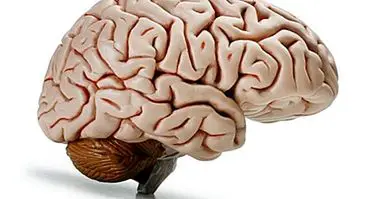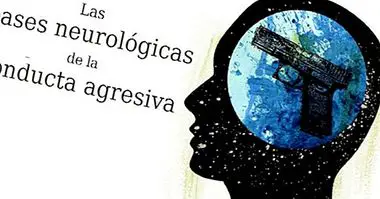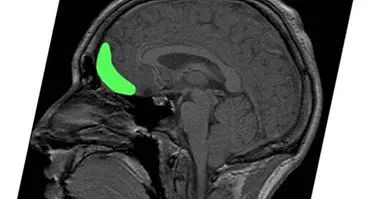REM sleep phase: what is it and why is it fascinating?
Today, a large majority of the population knows or has heard about the concept of REM phase or REM sleep . We know that it is part of our dream and that, at least, it presents some differences in regards to the rest of the dream, non-REM.
Many people do not know what makes this dream so necessary for us. That is why in this article we will make a brief comment about what REM sleep is, and its peculiarities.
- Related article: "Types of brain waves: Delta, Theta, Alpha, Beta and Gamma"
The phases of the dream
Sleeping is an essential need for the human being and for most living beings. Our body is a structure that consumes energy continuously, specifying the elements of our "machinery" at rest in order to function correctly.
Sleeping is fundamental. However, the dream is not something uniform that appears abruptly. In fact, during the dream, several cycles composed of different phases occur, in which different functions are altered and in which our brain reduces or increases certain types of bioelectric activity . Specifically, we usually have between 4 and 9 of these cycles divided into five phases. These phases usually follow a certain order.
First of all, in phase 1 we find ourselves in a phase of numbness, in which our conscience is gradually reduced, even though at the minimum stimulation we can clear ourselves. Our brain mainly records alpha waves, which are the usual relaxation states even when we are awake.
Later and if nothing interrupts it, we enter a second phase, in which eye movements are reduced completely and there is a marked decrease in muscle tone. Every time we are more relaxed and disconnected from the environment. If we observe the functioning of the brain at the wave level with an electroencephalogram, we observe how theta waves prevail, with the peculiarity that oscillations appear in brain activity. in the form of K complexes and sleep spindles .
After these phases, both of light sleep, we would enter phases 3 and 4 of sleep, known as deep sleep. It is about the phases in which a real rest of the organism takes place. Physical activity is practically non-existent for most people, although there is an increase in muscle tone . Night terrors and other parasomnias such as sleepwalking occur during these phases of sleep. The recording of brain waves would show a general prevalence of delta waves.
These phases correspond entirely to non-REM sleep. But behind them, we can still find one more phase, the REM or MOR phase.
- Related article: "The 5 phases of sleep: from slow waves to REM"
The REM or MOR phase
The REM phase (REM being the acronym for Rapid Eye Movement) or MOR (Rapid Eye Movement), is one of the most important phases of sleep. It is characterized by the presence of high brain activity, which may be visible in the performance of fast and constant eye movements .
It is considered desynchronized sleep. The brain activity is similar to what we would have awake or in phases of numbness, there being abundant theta waves with saw teeth (the latter especially characteristic of the parietal areas of the brain) and beta. The body remains totally immobile and paralyzed, with complete disappearance of muscle tone except in eyes and diaphragm.
It is in the REM phase of the dream that dreams and nightmares appear, as well as the ability to remember them. There is also an increase in physiological activation (despite muscular atony), increasing blood pressure, heart rate and respiratory and being the occurrence of erections. As the cycles continue, the amount of REM sleep increases.
Main function of this stage of sleep
The functions of this type of dream are not clearly defined. However, it is considered that during REM sleep we reorganize our mental contents, fixing the new memories and integrating them into memory at the same time we discard those information or memories considered irrelevant. Thus, this type of dream converts the experience into memory stored in long-term memory.
Also, it is during these phases that the highest level of brain development occurs, being fundamental for its maturation especially during the growth stage. It is considered desynchronized sleep.
This is not only important at the cognitive level , but also in regard to sensory processing, as they seem to indicate studies such as those of Marcos Frank at the National Institute of Health of the United States, for example allowing the ERK protein (a protein that is only activated in this phase of sleep). ) finish fixing changes in the visual cortex and adjust the connections that allow the development of visual perception. The same goes for other skills.
Evolution throughout the life cycle
Throughout life our biorhythms and our sleep cycles vary enormously . We do not sleep the same during our first year of life at thirty, and even less than at eighty.
Newborns, for example, dedicate a great part of the day to sleep, being around 50% of this time in the REM phase. From the fourth month this percentage is reduced to 40 & and begins to be preceded by non-REM sleep. As the child grows, the time he wakes up increases and the amount of sleep decreases. At the approximate age of six years, sleep patterns and cycles stabilize, resembling an adult's dream.
During adulthood, the approximate proportion of REM sleep is 20%, with the rest being non-REM sleep. With age, the total sleep time is reduced and fragmented, especially when we reach old age, with a lot of night awakenings . The amount of sleep is dramatically reduced, including that of the REM type. Despite this, a lower latency of REM sleep is observed (it takes less to make an appearance).
Bibliographic references:
- McCarley, R.W. (2007). Neurobiology of REM and NREM sleep. Sleep Med, 8



















